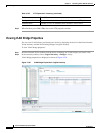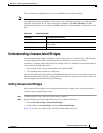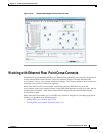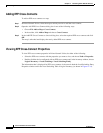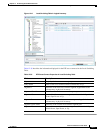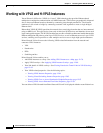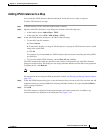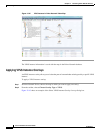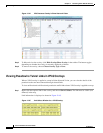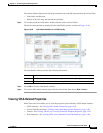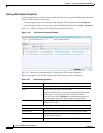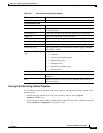
12-78
Cisco Prime Network 4.0 User Guide
OL-29343-01
Chapter 12 Monitoring Carrier Ethernet Services
Working with VPLS and H-VPLS Instances
Working with VPLS and H-VPLS Instances
Virtual Private LAN Service (VPLS) is a Layer 2 VPN technology that provides Ethernet-based
multipoint-to-multipoint communication over MPLS networks. VPLS allows geographically dispersed
sites to share an Ethernet broadcast domain by connecting sites through pseudowires. The network
emulates a LAN switch or bridge by connecting customer LAN segments to create a single bridged
Ethernet LAN.
Hierarchical VPLS (H-VPLS) partitions the network into several edge domains that are interconnected
using an MPLS core. The edge devices learn only of their local N-PE devices and therefore do not need
large routing table support. The H-VPLS architecture provides a flexible architectural model that enables
Ethernet multipoint and point-to-point Layer 2 VPN services, as well as Ethernet access to Layer 3 VPN
services, enabling service providers to offer multiple services across a single high-speed architecture.
Prime Network Vision discovers the following VPLS-related information from the network and
constructs VPLS instances:
• VSIs
• Pseudowires
• EFPs
• Switching entities
Prime Network Vision enables you to:
• Add VPLS instances to a map—See Adding VPLS Instances to a Map, page 12-79.
• Apply VPLS overlays—See Applying VPLS Instance Overlays, page 12-80.
• View link details in VPLS overlays—See Viewing Pseudowire Tunnel Links in VPLS Overlays,
page 12-82.
• View VPLS-related properties—See the following topics:
–
Viewing VPLS Instance Properties, page 12-84
–
Viewing Virtual Switching Instance Properties, page 12-85
–
Viewing VPLS Core or Access Pseudowire Endpoint Properties, page 12-87
–
Viewing VPLS Access Ethernet Flow Point Properties, page 12-89
You can delete a VPLS forward from Prime Network Vision if it is displayed with the reconciliation icon.



